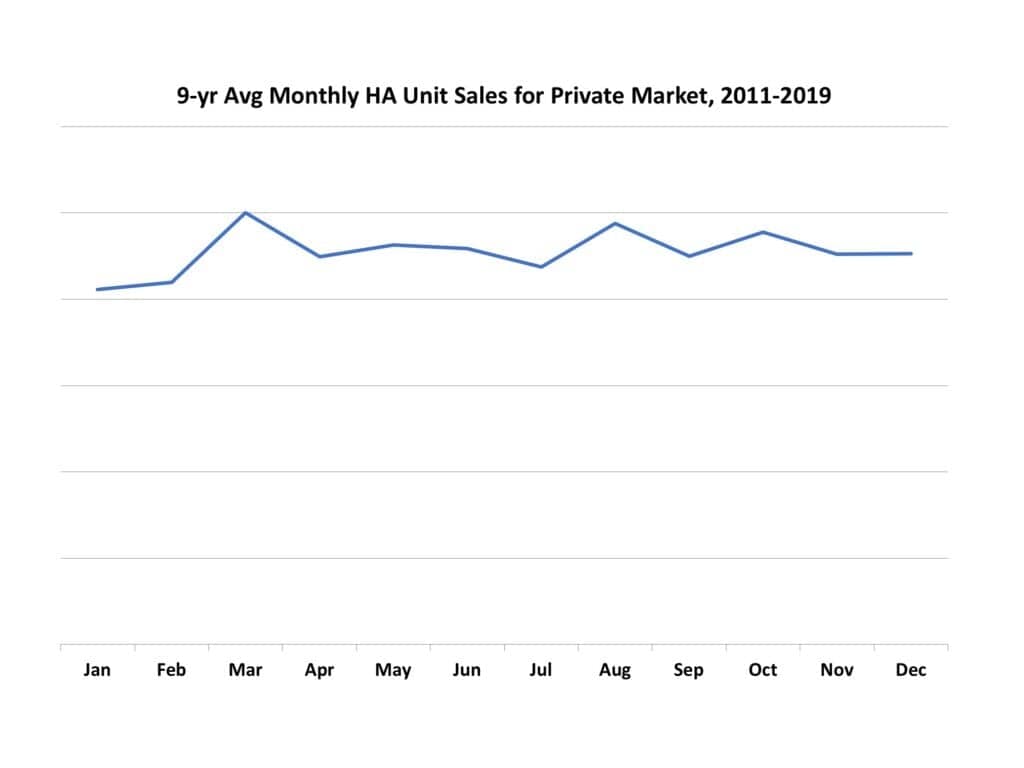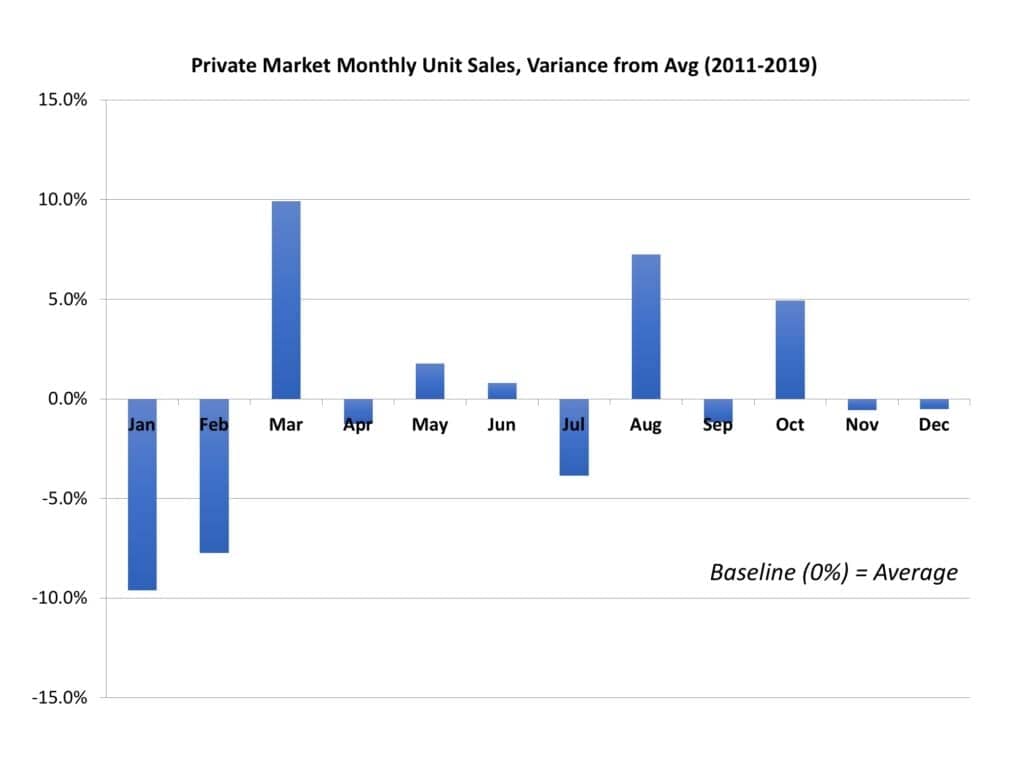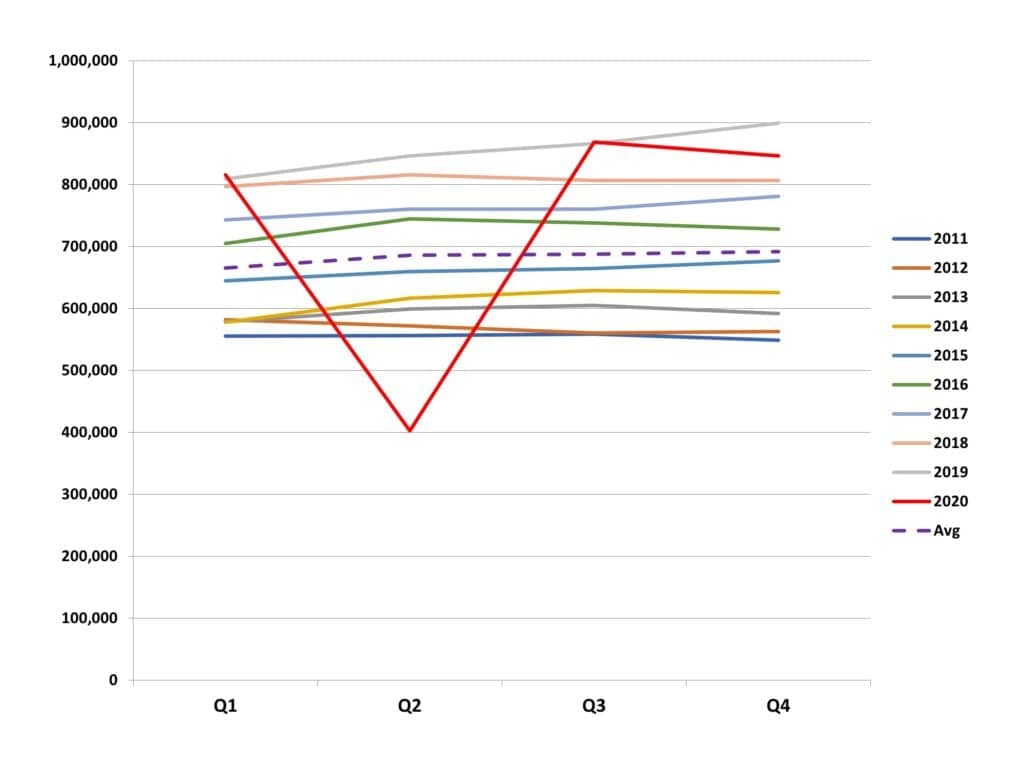The past year has been anything but typical. However, if long-term hearing aid sales trends are predictive of future dispensing volume, then the statistics suggest we should—right now in March—be arriving at one of the best times of the year for business. And that means trying to make the most of this period while preparing for the better days to come.
Seasonal Fluctuations in Hearing Aid Sales
Figure 1 shows the average unit sales of hearing aids for each month over a 9-year period (2011-2019) for the private/commercial hearing aid market (ie, excluding VA sales), as indicated by statistics from the Hearing Industries Association (HIA).

In general, hearing aid unit sales are relatively stable throughout the year with a few noticeable exceptions. Unit sales start off at their low points in January and February, then experience a steep increase in March. Sales are okay but fairly flat during the spring and early-summer, fluctuate during the fall, then stay close to average at the close of the year.
Figure 2 shows this trend in greater detail by taking the average monthly unit sales over this 9-year period and contrasting them to the sales of each individual month. Most notable is the first quarter. Again, the poor January and February sales (-10% and -8%, respectively, compared to the average) stand in stark contrast to March which is the best month (about +10%) for hearing aid sales during the year, according to the data. According to the HIA statistics, annual hearing aid unit sales increases during this 9-year period ranged between 3-9%, with an average annual increase of 5.3%.

Over the course of the year, there are a number of things that might account for these sales fluctuations, including January-February being months that immediately follow holiday spending, higher utility bills in northern climates, poorer weather/flu months that could dissuade seniors from seeking healthcare-related services, as well as the purchasing habits/history of larger buying entities (eg, Costco).
Related Article: US Hearing Aid Sales Fall by 18% in 2020
However, in general, the data corresponds well to some anecdotal reports from practice owners through the years: January and February can induce hand-wringing about the future, and these concerns tend to dissipate as we see longer days and warmer temperatures, usually starting in March. Also interesting is the July swoon is followed by the second-highest increase in hearing aid unit sales during August.
What’s Ahead in 2021?
As noted, 2020 certainly was not a typical year, which is why sales figures for 2020 were excluded in the above analysis. Figure 3 shows 10 years of quarterly hearing aid sales from 2011 through 2020 for the private/commercial market. In general, for most years, hearing aid sales are relatively poorer in Q1 and then rise slightly through each quarter (see dotted line representing the 10-year average). However, in 2020, the pandemic struck hearing healthcare practices extremely hard, with a -52.5% decrease in the second quarter. The good news is that sales rebounded dramatically in Q3 to slightly exceed 2019 unit sales levels, but then tailed off in Q4. Anecdotal reports from the field suggest that Q1 2021 unit sales will be somewhere in the ballpark of Q1 2020 unit sales and then should start increasing in a usual or slightly accelerated manner due to pent-up demand—barring any new resurgence of the pandemic or some other adverse event.

To take advantage of these trends, hearing care professionals should keep an eye toward attracting new patients through enhanced care and marketing, establishing and nurturing referrals from physicians and other allied healthcare professionals, and convincing established clients to return to the office for updating their hearing aids. Professionals should also encourage all patients to check out the wide variety of technology options, like remote microphones, captioned phones, and other assistive devices. This can all be facilitated by reminding everyone—patients and referral sources alike—that you offer a range of financing options, such as those offered by Ally Lending, that include low-cost and even no-interest financing.
Oh, and try not to panic in January and February!
About the author: Karl Strom is editor of The Hearing Review and has been reporting on hearing healthcare issues for over 25 years. He wrote this article for the sponsored Ally Lending enewsletter.





